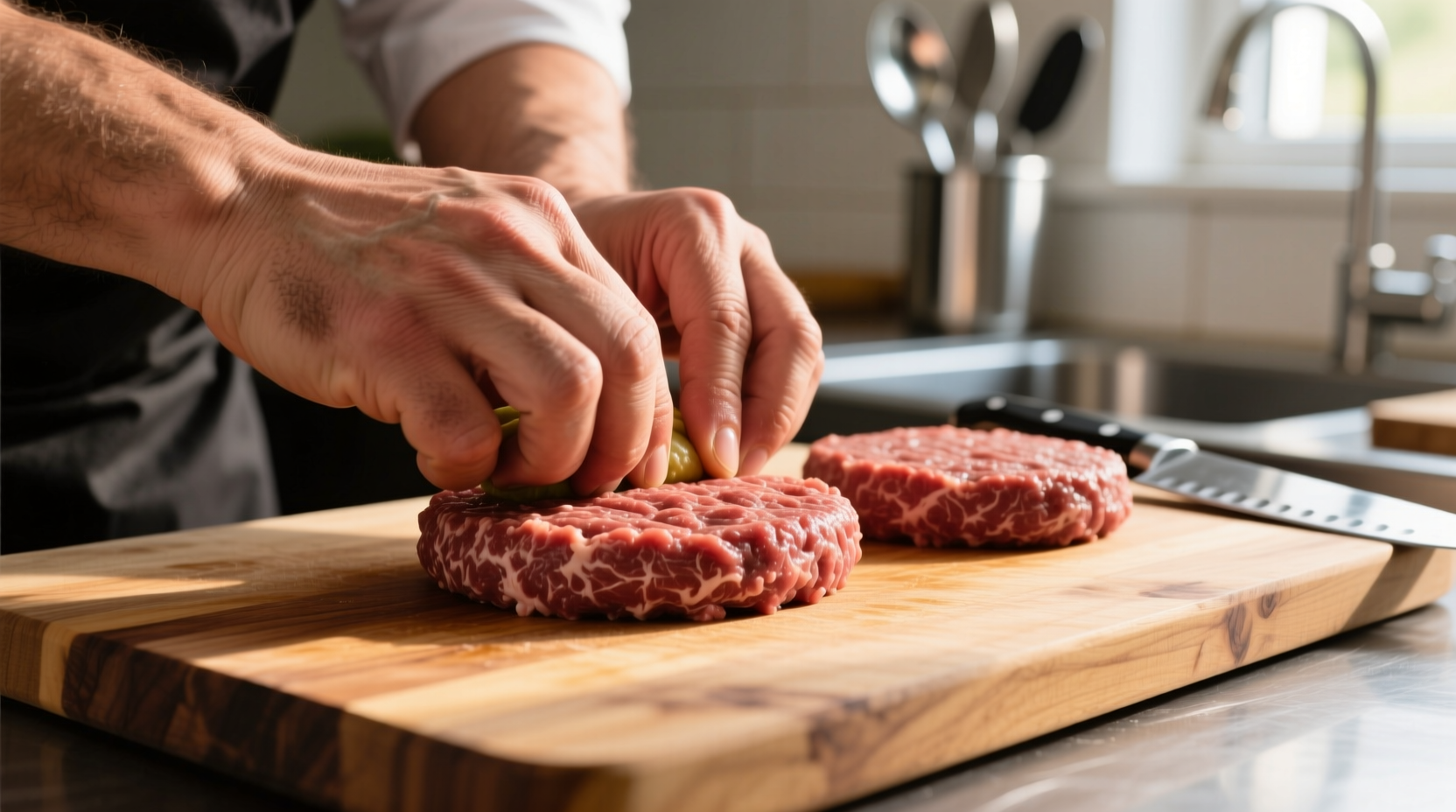Achieve restaurant-quality burgers at home by heating a cast-iron skillet over medium-high heat, forming ¾-inch thick patties with 80% lean beef, seasoning only with salt and pepper, cooking 3-4 minutes per side for medium, and letting rest 5 minutes before serving. This method delivers a perfect sear while keeping juices locked in.
Why Your Stovetop Is the Secret Weapon for Perfect Burgers
While many believe grilling is the only way to make great burgers, your stove offers superior temperature control for consistent results year-round. Unlike outdoor grilling affected by weather, indoor cooking lets you achieve the ideal Maillard reaction temperature (285-325°F) without flare-ups that char meat unevenly. According to the USDA Food Safety and Inspection Service, cooking burgers to 160°F internal temperature ensures food safety while maintaining juiciness when done properly.| Cooking Method | Temperature Control | Consistency | Year-Round Viability |
|---|---|---|---|
| Stovetop | Excellent | High | All seasons |
| Grill | Variable | Moderate | Seasonal |
| Oven | Good | High | All seasons |
Essential Equipment Checklist
You don't need fancy tools—just these three items:- Heavy-bottomed skillet (cast iron preferred): Retains heat evenly for consistent searing
- Metal spatula: Provides clean flipping without piercing the patty
- Instant-read thermometer: Critical for hitting perfect doneness (160°F for safety)
Selecting and Preparing Your Beef

- Handle meat minimally—overworking creates dense burgers
- Make ¾-inch thick patties slightly wider than your bun (they'll shrink)
- Create a shallow dimple in the center to prevent bulging
- Chill patties 15 minutes before cooking for cleaner sear
The Step-by-Step Cooking Process
Phase 1: Pan Preparation (2 minutes)- Heat cast-iron skillet over medium-high heat 5 minutes until water droplets sizzle violently
- Add 1 tablespoon high-smoke point oil (avocado or canola)
- Oil should shimmer but not smoke excessively
- Place patties in hot pan without touching
- Cook undisturbed 3-4 minutes for medium (adjust for desired doneness)
- Flip once using metal spatula—never press down (loses juices)
- Cook additional 3-4 minutes, adding cheese during last minute if desired
- Verify 160°F internal temperature with thermometer
- Transfer burgers to wire rack (not plate) to prevent steaming
- Rest 5 minutes—this allows juices to redistribute
- Toast buns in same pan for 30 seconds
- Assemble immediately after resting
Troubleshooting Common Stove Top Burger Problems
Problem: Patties stick to the pan- Solution: Ensure pan is properly preheated before adding oil and patties. Wait until a deep sear forms (about 2 minutes) before attempting to flip.
- Solution: Adjust heat to medium if edges are burning before center cooks. Use an instant-read thermometer rather than guessing by time alone.
- Solution: Don't overcrowd the pan—cook one burger at a time if necessary. Excess moisture from multiple patties lowers pan temperature.
Pro Tips for Next-Level Results
- Butter basting: During final minute, add 1 tablespoon butter and fresh herbs to pan, tilting to spoon melted butter over patties
- Temperature control: If flare-ups occur, temporarily remove pan from heat rather than adding water which creates steam
- Cheese melting: Cover pan with lid for 30 seconds after adding cheese for even melting without overcooking
- Flavor boost: Add a pinch of Worcestershire sauce to the meat mixture before forming patties











 浙公网安备
33010002000092号
浙公网安备
33010002000092号 浙B2-20120091-4
浙B2-20120091-4